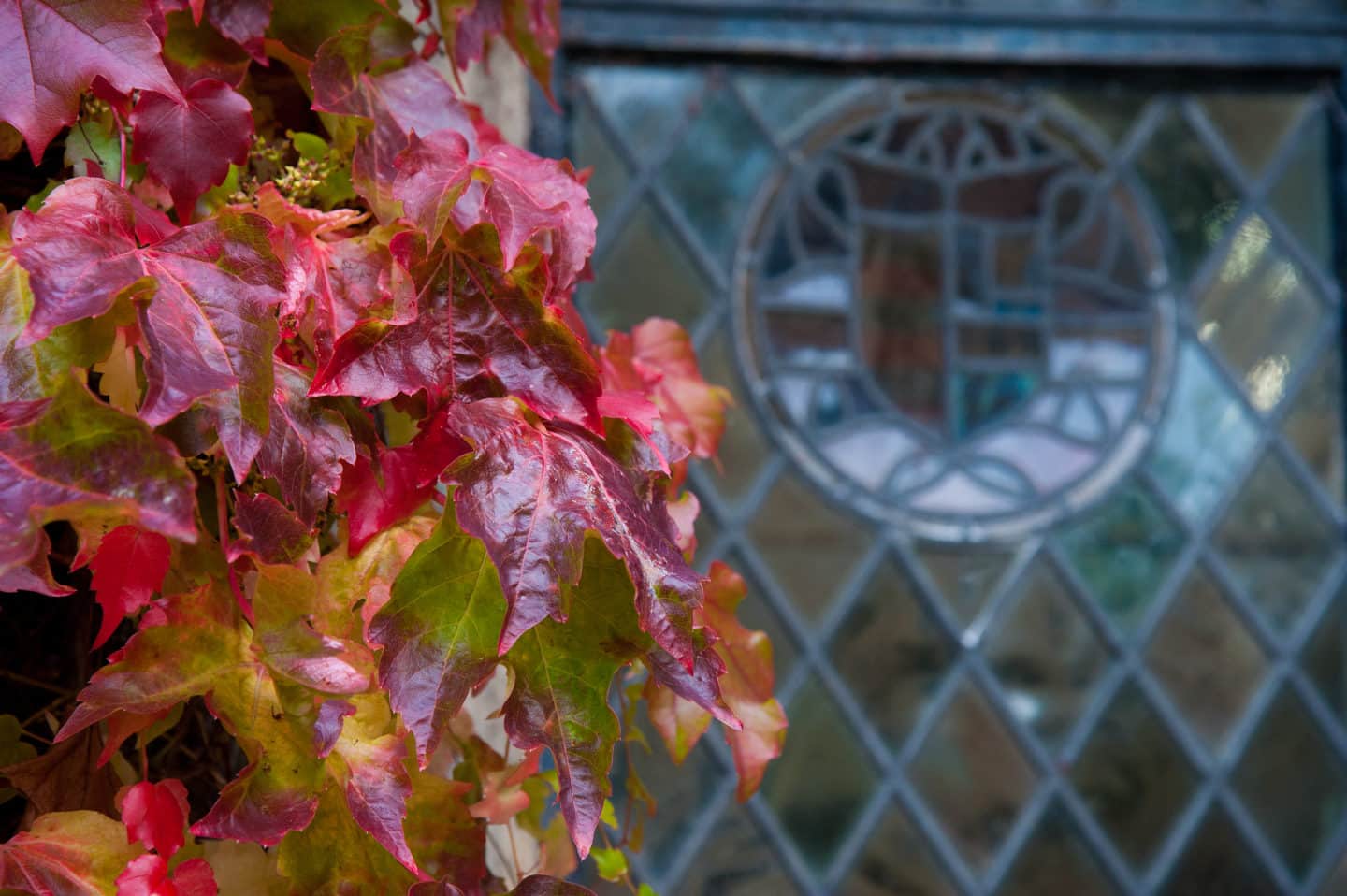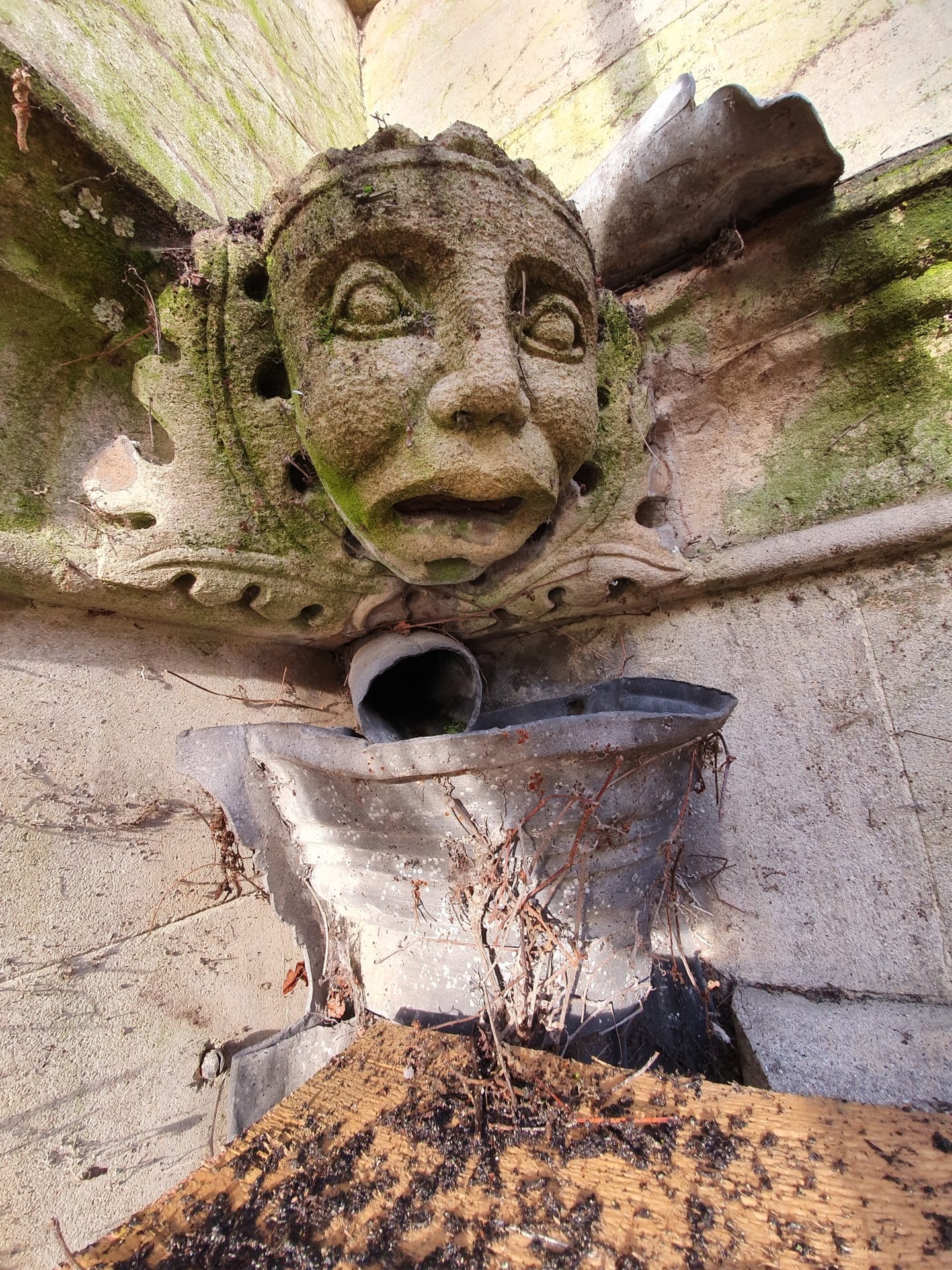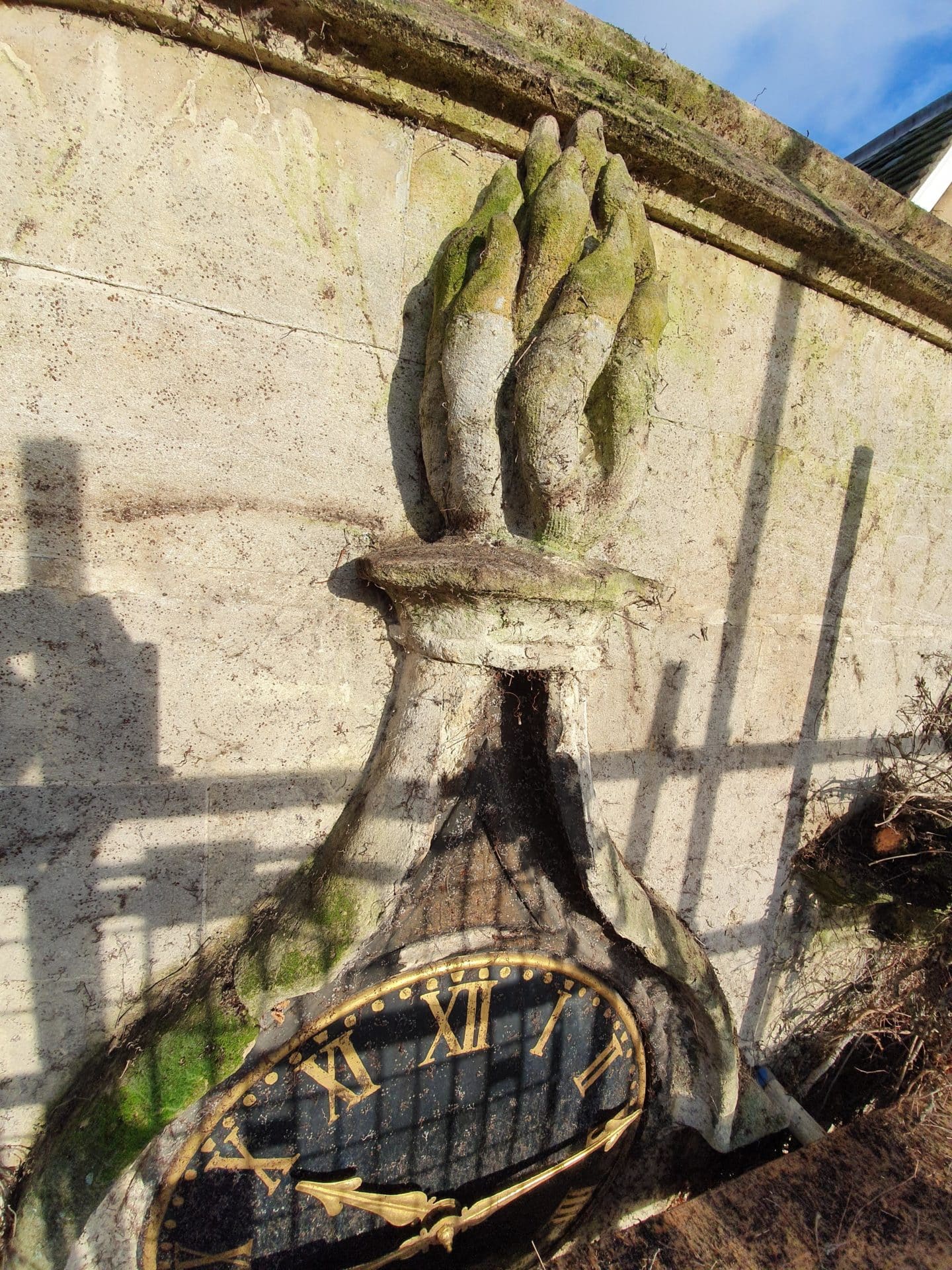Blog Post
The Green Man

One of the striking features of Lincoln has always been the Boston ivy (Parthenocissus tricuspidata) which has often mistakenly been reported as being a Virginia Creeper in the press, but every year we get to enjoy the display of colour that signifies the start of Autumn. So the decision to remove some of it was not an easy one for the College.
One aspect of college maintenance is our need for pest control, mainly pigeons and small rodents. These animals tend to become pretty numerous in poorer quality environments like city centres. Looking at any blueprints for the colleges with their network of historic drains shows a very efficient public transport system for rodents, so trying to keep colleges free of them is not an easy task. For many years now we have had ongoing problems in the Bursar's Office and we were very aware the ivy may be contributing from this, especially on the left hand side of the clock.
The other concern we had was damage to the wall. Unlike traditional ivy, Boston ivy does in no way damage the wall by clinging to it and invading masonry, however it does retain moisture, more than most other woods, dripping like a poorly turned off tap when you cut a branch. This moisture can have a very high acidity, as pigeon faeces is constantly washed down and over time is causing the stone work to erode in places, this is very noticeable around the archway under the clock.
We decided that removal of the ivy under the clock to investigate rodent access and assess the damage to the wall was in order.
It is always a sad thing to cut down such an old established plant, and thought the job may be quite a difficult one for the gardens team to undertake, but it turned into quite an exciting project. Hidden under masses of old rotting branches were some beautiful old features of the College which had been hidden for decades.


